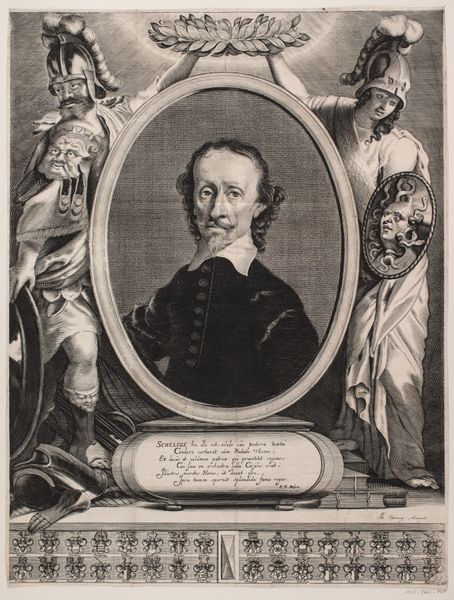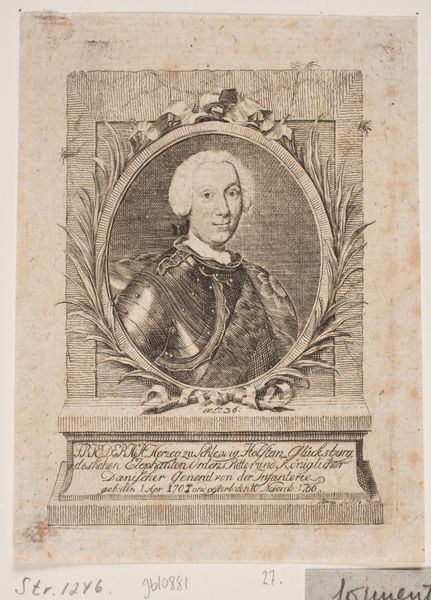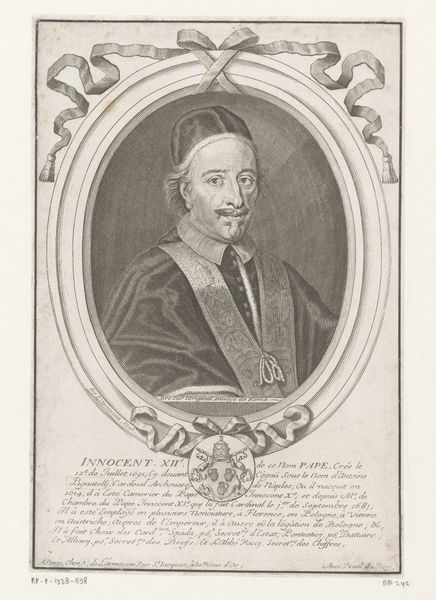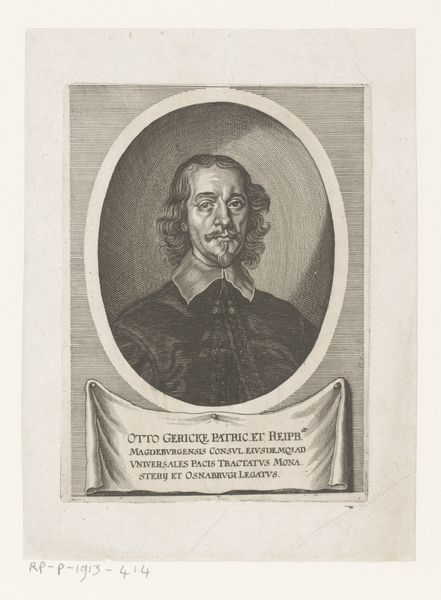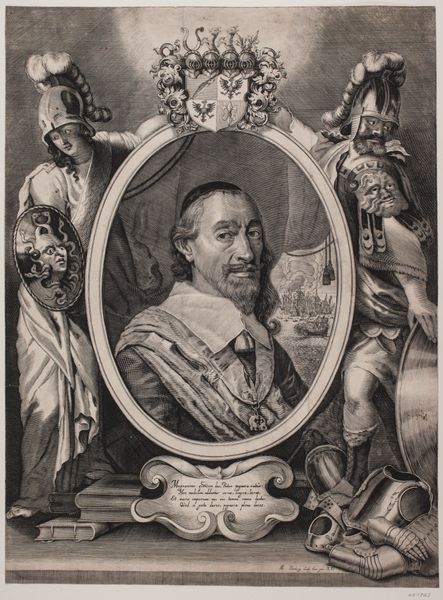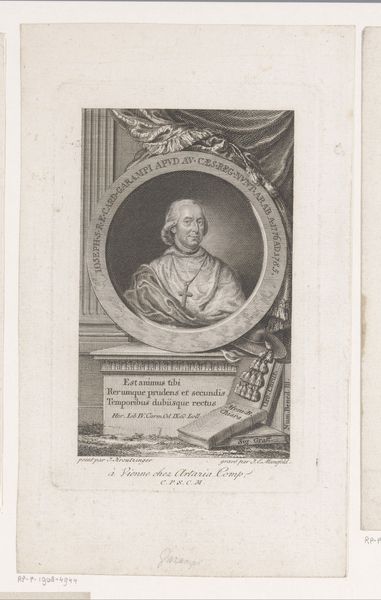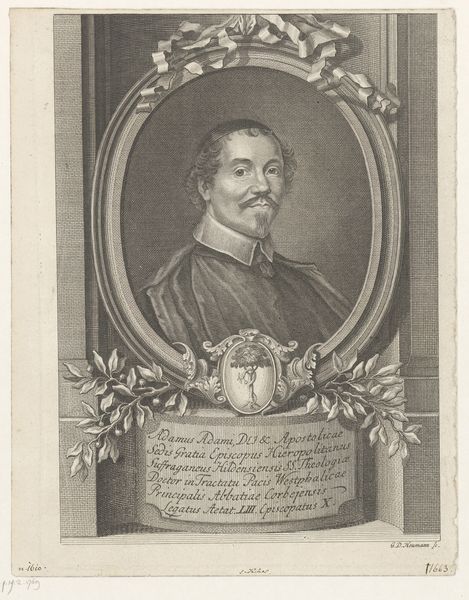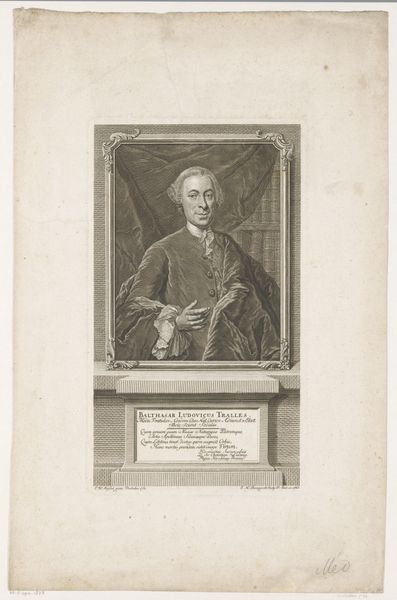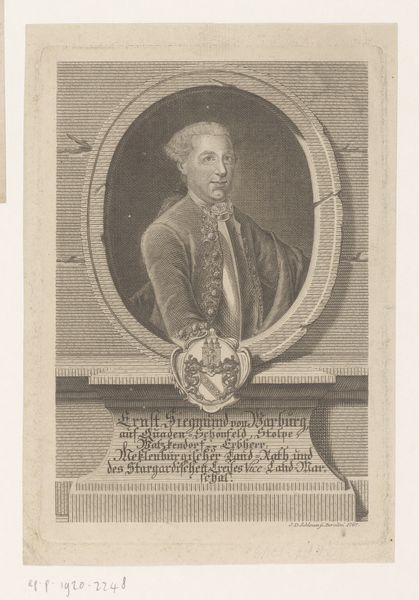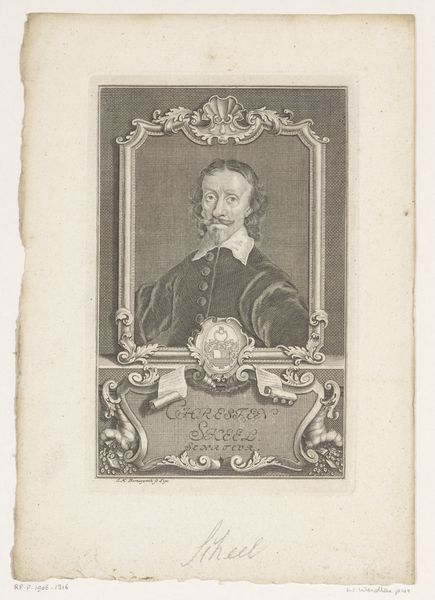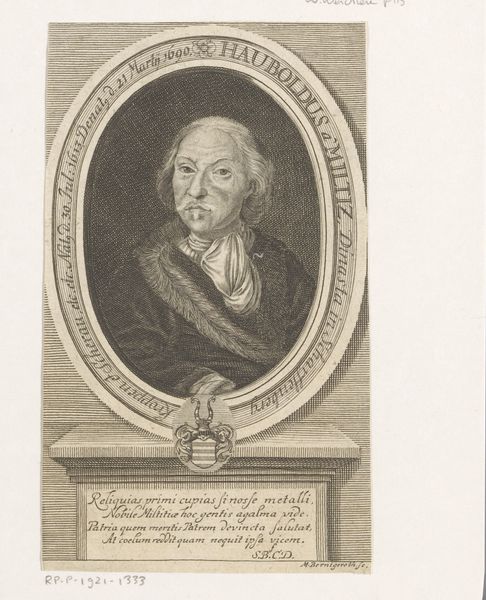
print, engraving
#
portrait
#
allegory
#
baroque
# print
#
old engraving style
#
history-painting
#
engraving
Dimensions: 520 mm (height) x 392 mm (width) (plademaal)
Editor: This engraving is "Christen Skeel. Mindeblad" from around 1666-1669, by Albert Haelwegh. It's got a formal, almost theatrical quality with these figures flanking the central portrait. What stands out to you about it? Curator: The theatricality you mention is key. Baroque portraiture was often performative, designed to project power and status. But, if we consider how identity was constructed during this period, especially for someone like Christen Skeel, what narratives are being reinforced here? The inclusion of those classical figures, the text below... it all works together. Editor: I see what you mean. The classical figures—are they supposed to represent specific virtues or something? And what about that inscription at the bottom? It looks like Latin. Curator: Exactly. The figures, with their helmets and shields, likely allude to military prowess and nobility, common aspirations among the ruling class. That Latin inscription is a eulogy, reinforcing his virtues and legacy, but remember, such pronouncements often masked more complex realities. Whose voices are centered here, and whose are silenced in the making of this image? Editor: So, it's not just a straightforward depiction of an individual, but a carefully constructed image designed to communicate a specific message about power and legacy within the social and political context of the time? Curator: Precisely. We need to question what power dynamics are at play and how they shape our understanding of historical figures and narratives. Think about gender roles, class structures, and access to representation—all of these are interwoven in an image like this. Editor: That makes me see this as way more than just a portrait; it’s a cultural artifact reflecting a specific historical moment. Thanks, I hadn’t considered it that deeply before. Curator: Indeed. It’s in understanding these complex layers that we can truly engage with art's power to both reflect and shape our world.
Comments
No comments
Be the first to comment and join the conversation on the ultimate creative platform.
